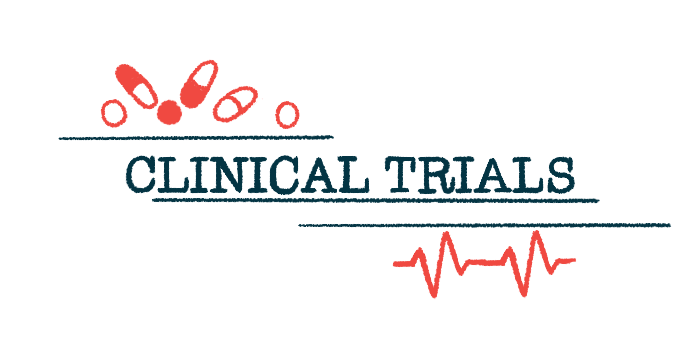NMOSD treatment HNSA-5487 found safe, effective in Phase 1 trial
In healthy volunteers, therapy reduced antibodies linked to immune attacks
Written by |

HNSA-5487, Hansa Biopharma’s experimental treatment for neuromyelitis optica spectrum disorder (NMOSD) and other autoimmune diseases, safely and effectively reduced the levels of immunoglobulin G (IgG) antibodies — ones involved in the abnormal immune attacks that drive these conditions — in a Phase 1 clinical trial involving healthy volunteers.
Participants in the trial, dubbed NICE-01, saw their IgG levels drop by 95% within a few hours after a single HNSA-5487 dose, and return to normal after six months, the therapy’s developer said in a company press release.
“We are very encouraged by these results that demonstrate HNSA-5487 can robustly and very rapidly reduce IgG levels, has redosing potential, and a favorable safety and tolerability profile,” said Søren Tulstrup, Hansa’s president and CEO. “These results underscore the transformational potential of HNSA-5487 to address significant unmet need across a spectrum of IgG-driven diseases and conditions, including autoimmune where there is a clear need for better management of initial and repeat immune system attacks.”
The company said it plans to initially focus the therapy’s clinical development in NMOSD and its related condition myelin oligodendrocyte glycoprotein antibody-associated disease, as well as in myasthenia gravis, an autoimmune disease marked by muscle weakness.
HNSA-5487 aims to reduce IgG antibodies in NMOSD, other conditions
Autoimmune diseases are driven by the immune system’s abnormal production of self-reactive antibodies against healthy parts of the body. IgG, the most abundant class of antibody in the blood, is also the one most commonly associated with autoimmune responses.
In NMOSD, the immune system mistakenly attacks the eye nerves and spinal cord, causing symptoms like pain, vision loss, and muscle weakness. Symptoms also can recur, accumulating damage with each attack.
Most cases of NMOSD are driven by self-reactive IgG antibodies against the aquaporin 4 (AQP4) protein, which are detected in about 80% of cases.
“There is mounting clinical evidence that faster and more robust IgG reduction is directly linked to more successful therapeutic outcomes in autoimmune and other diseases,” Tulstrup said.
In slides used during a recent company conference call, Hansa stated that “clinical guidelines call for fast, effective reduction of IgG in both the acute and recurring stages of [autoimmune] disease.” However, the company also noted that “current approaches to care have significant side effects, are time consuming, and may not be effective for all patients.”
In addition, in NMOSD, “there are no approved drugs [for] managing acute attacks, only for prevention of relapses,” the company noted.
There is mounting clinical evidence that faster and more robust IgG reduction is directly linked to more successful therapeutic outcomes in autoimmune and other diseases.
HNSA-5487 is a next-generation IgG-cleaving enzyme designed to be highly potent, specific, and safe, and to have a reduced ability to trigger immune responses against it, thereby allowing for repeat dosing months after a rapid, robust reduction of IgG levels. It works by cleaving IgG into two main fragments, making it ineffective.
The therapy thus is expected to reduce IgG levels, easing symptoms of NMOSD and other IgG-driven diseases.
Phase 1 trial tested NMOSD treatment candidate in 36 healthy adults
Hansa’s first-generation IgG-cleaving enzyme imlifidase is approved under the brand name Idefirix in the European Union, but not in the U.S. In Europe, it’s indicated adults receiving a kidney transplant. The therapy also is being evaluated for other indications, including autoimmune diseases, per the company.
“We believe HNSA-5487 has a highly differentiated profile compared to published data from studies with other IgG-targeted therapies,” Tulstrup said.
The NICE-01 trial enrolled 36 healthy adults who were randomly assigned to receive a single intravenous, or into-the-vein, infusion of either one of five doses of HNSA-5487 (range, 0.02-1 mg/kg) or a placebo. The participants then were followed for up to 12 months, or about one year.
The goal of the Phase 1 trial was to evaluate the therapy’s safety and ability to reduce IgG levels, and assess whether it showed good properties to allow repeated dosing.
Previous results had shown that the treatment resulted in rapid and complete IgG cleavage with increasing doses.
The newly announced data demonstrated that HNSA-5487 reduced IgG levels by more than 95% within a few hours. All participants given the two highest doses — 0.05 or 1 mg/kg — were defined as responders, meaning their IgG dropped to less than 5% of the initial levels. The proportion of responders dropped to 83% with the 0.18 mg/kg dose.
In previous trials of imlifidase, at a dose of 0.25 mg/kg, the responder rate reported was 88%, data show.
Six months after HNSA-5487’s single dose, the participants’ IgG levels were back to normal. Blood testing indicated that HNSA-5487 may lead to a milder immune response against it than imlifidase, resulting in a lower peak level of antibodies against the therapy that have the potential to hamper its efficacy.
Moreover, no serious side effects were reported during the trial, indicating that HNSA-5487 may be safe and well tolerated.
Altogether, the data suggest that HNSA-5487 can be safely given more than once to extend its effect, that is, to keep IgG levels in a low range.






